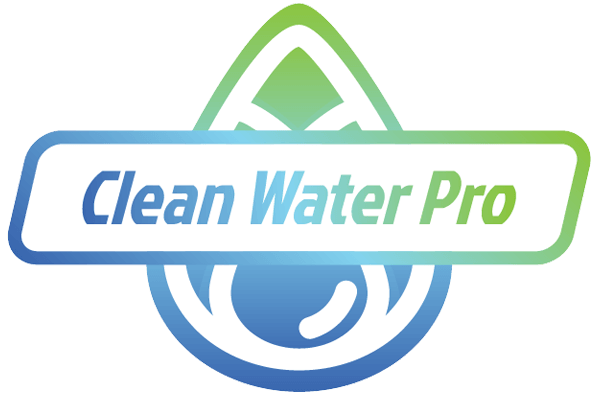Wetland Assessments
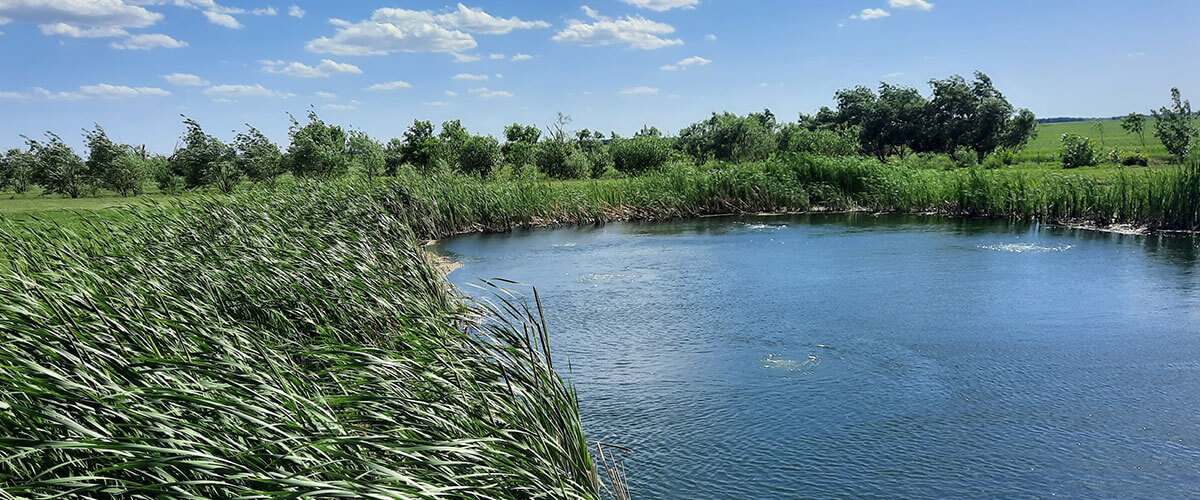
At Clean Water Pro, we pride ourselves on our expertise in assessments of wetlands. Our staff possess the knowledge and equipment to characterize, classify and delineate wetlands throughout Canada and the Northern United States, allowing your project to meet licensing requirements.
Our environmental team has extensive experience in wetland aquatic biology, water quality, and aquatic and wetland vegetation mapping and identification. We work with land developers, farmers and industries to provide technical expertise in wetland management and delineation and classification assessments in line with the Water Rights Regulation, M.R. 126/87 (gov.mb.ca). Provincial governments often require these assessments to determine if a project is registrable or requires a licence if wetlands are to be drained or altered.
We utilize technology, and our resource guidelines include Wetland Classification System (CWCS), Ducks Unlimited Enhanced Wetland Classification (DU EWC), Stewart and Kantrud Classification System, and Manitoba Wetland Assessment Method.
Wetland Delineation & Classification: Detailed analysis of critical area types, classification, boundaries, and buffer widths present on-site, which may be used for permitting purposes.
Wetland Reconnaissance Assessment: General property assessment to determine if critical areas are present on a property. If none are found, the product is a letter-style report confirming the absence of critical areas, which may be used for permitting purposes.
Ecological Classification Assessments
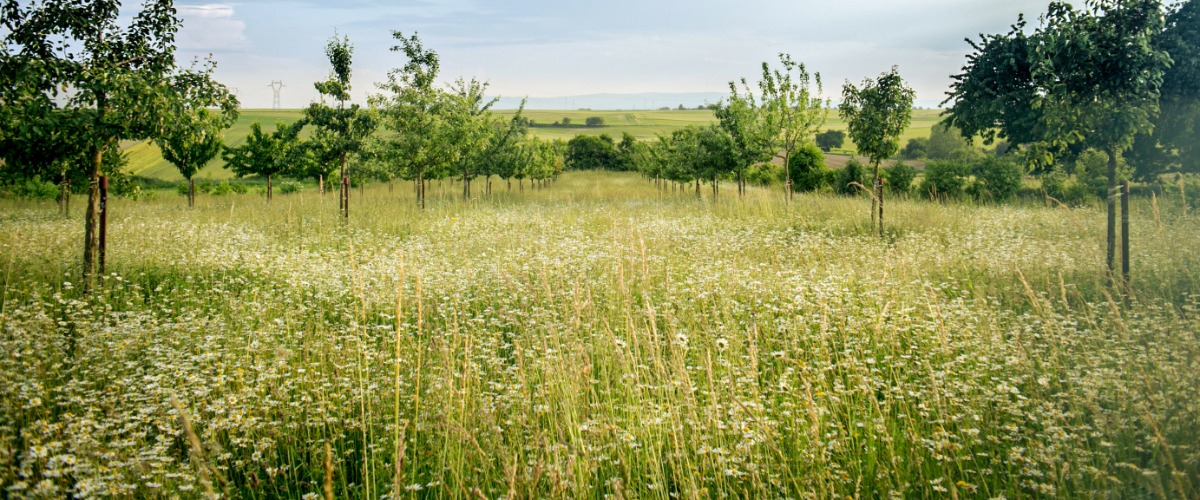
Clean Water Pro environmental staff will conduct Ecological Classification Assessments to describe and categorize ecosystems based on their physical and biological characteristics.
An ecological classification is an important tool widely used in conservation biology and natural resource management, as it helps us decide how best to protect and manage different types of ecosystems. It involves identifying key ecological factors such as climate, geology, topography, and soil type and using these to divide ecosystems into distinct groups.
We can divide these groups into subcategories, which helps us better understand the dynamics of different ecosystems and how they function. Using the Ecological Land Classification (ELC) system, the ELC divides the country’s natural landscapes into ecologically distinct areas based on their physical characteristics, such as climate, geology, vegetation, and soil.
Environmental Impact Assessments

Clean Water Pro will comprehensively look at the potential impacts a proposed project or activity will have on the environment. It looks at the potential for physical, biological, and cultural impacts that could result from the proposed project, including effects on; water, soil, air, wildlife, social and economic. With this information, we can outline best practices to mitigate and minimize the impact on the environment and the restoration.
Vegetation Inventory Assessment
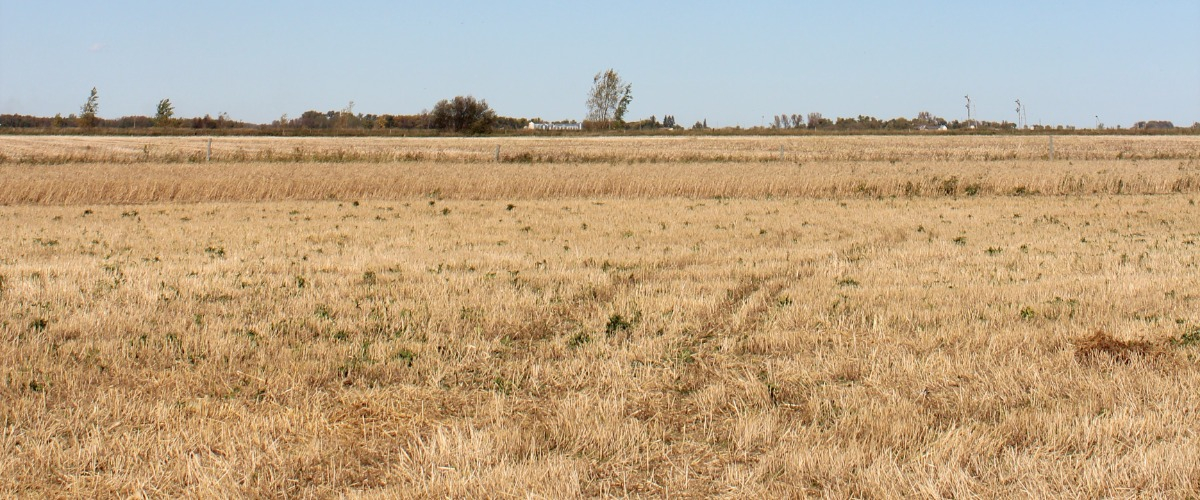
Clean Water Pro will perform a vegetation inventory under provincial standards for vital information on impact assessment, habitat characterization, monitoring and biodiversity analysis. Using Aerial photos and field surveys, our staff obtain an in-depth look at a given area.
With a vegetation inventory assessment, we can make informed decisions regarding a project or study along with ecosystem land managers: habitat suitability, mitigation, and reclamation.
Environmental Assessment
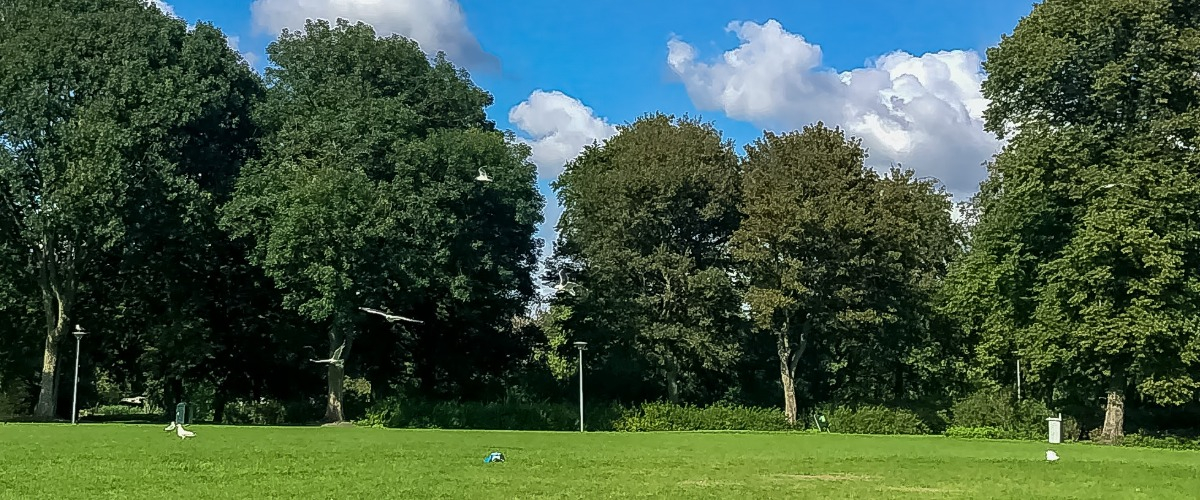
Clean Water Pro will conduct your next Environmental Assessment to investigate environmental characteristics that define the specified site and its environmental values. Our staff will perform any necessary field surveys and literature reviews to get your project off the ground.
An Environmental Assessment is a process designed to review and assess the potential environmental impacts of a proposed project or activity. It typically looks at the possible effects of the project or activity on air quality, water quality, land use, natural resources, and population or community effects. While an EA looks at the potential impacts of a proposed project or activity, it does not make any decisions about the project or make any recommendations.
Feasibility Studies

If your organization is considering undertaking a new project, venture or investment, you may consider having a feasibility study completed. Our experts at Clean Water Pro will provide the feasibility of your next project. Our team will comprehensively analyze the project’s scope, resources needed, cost and potential effectiveness to determine whether the project is worthwhile and whether your organization should implement it.
We will thoroughly evaluate regulatory requirements, cost estimates, environmental conditions, impacts, risks, and project alternatives.
Ecosystem Health Assessment

At Clean Water Pro, we understand the crucial need to determine the health of an ecosystem to make decisions regarding the ecosystem management plan. Our highly experienced staff are experts at utilizing keystone indicators and various other methods to determine the state and condition of the ecosystem’s health.
We look at everything within the ecosystem to deliver the highest quality report. With this information available, your organization can achieve the fundamentals of improving or maintaining the health of an ecosystem.
Forest Ecology Assessment
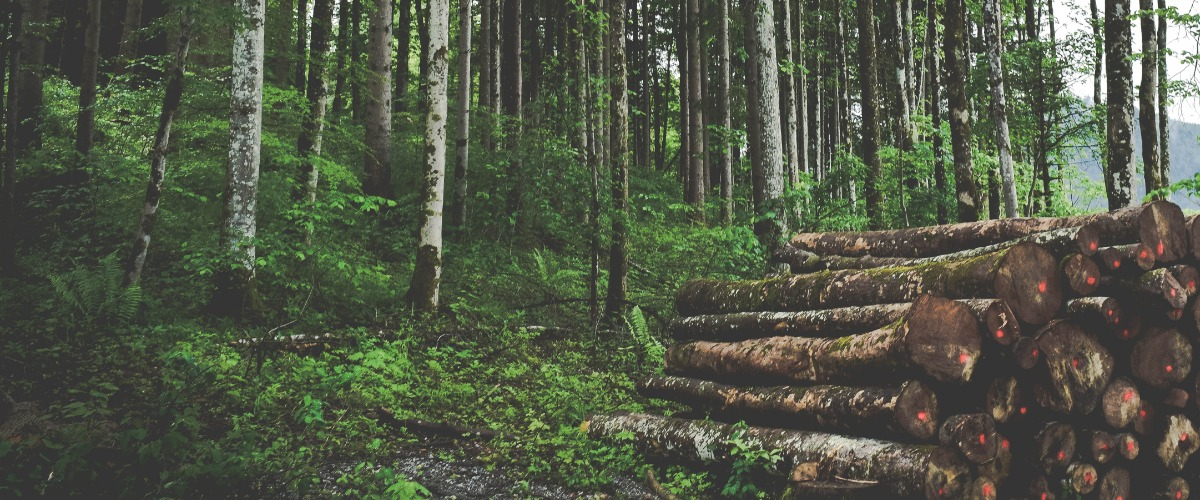
Clean Water Pro’s forestry experts will study areas designated for forestry practices, mining, scientific studies and other related industrial practices. By understanding the patterns and processes of a given forested area, we can determine the health, inventory, and best management practices to mitigate and preserve crucial locations within the forest.
Environmental Site Assessments (ESA) Phase I & Phase II
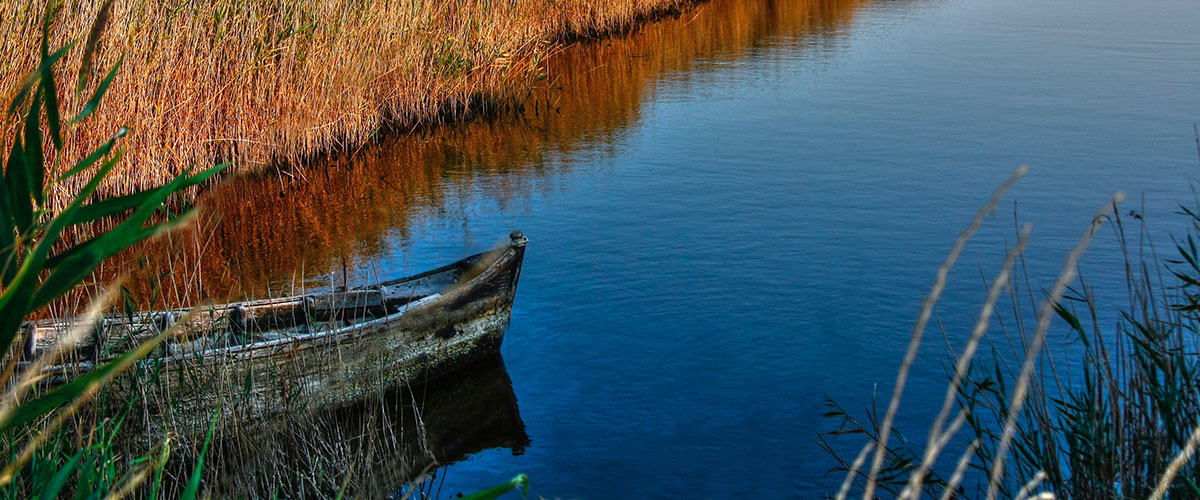
An ESA is a non-intrusive site investigation to assess the environmental condition of a building or Site. It investigates the potential for or the existence of site contamination and the risk of potential environmental liability at a property. It includes a historical review, a site visit and personal interviews. Our environmental team at Clean Water Pro is experienced in conducting Phases I and II ESAs following standard operating procedures developed in accordance with the Canadian Standards Association (CSA).
Phase I Environmental Site Assessment (ESA)
Phase I Environmental Site Assessments are preliminary site inspections to identify areas of concern for future testing. This assessment is a non-intrusive investigation of current Site conditions/operations and a historical review of environmental records relating to the Site and surrounding area. A Phase 1 ESA aims to identify potential environmental concerns at or surrounding a specific property.
Phase II Environmental Site Assessment (ESA)
A Phase II ESA is an investigation to assess the areas of potential environmental concern (APEC) identified during the Phase I ESA. The Phase II ESA typically may consist of boreholes via a drill rig or hand auger to collect soil for laboratory analysis and installing groundwater monitoring wells to collect groundwater at the Site. Phase II Environmental Site Assessments generally involve sampling water, air, soil, building materials or other components for potential contamination based on concerns identified during Phase I investigations.
Utility Transmission Line Assessment

At Clean Water Pro, we understand the vital importance of energy service providers requiring detailed Maps and surveys of existing and future infrastructure to deliver safe and consistent energy to homeowners and businesses.
Our expert staff and arborists will collect the data needed to create a vegetation management plan, map transmission line corridors, and plan distribution circuits. Using subsurface utility engineering, LiDAR surveys, and conventional ground surveys, Clean Water Pro will ensure accuracy and promptness for our clients.
Bathymetric Mapping

Bathymetric mapping is a process for measuring the depth of a body of water. Clean Water Pro performs a bathymetric survey of your pond or lake using sonar and GPS technologies. Equipped with the very latest, we can provide a precise mapping of your lake, lagoon, or pond. We map the bottom of lakes to determine depth, muck and sediment levels, vegetation, and more.
Fish Habitat Assessment
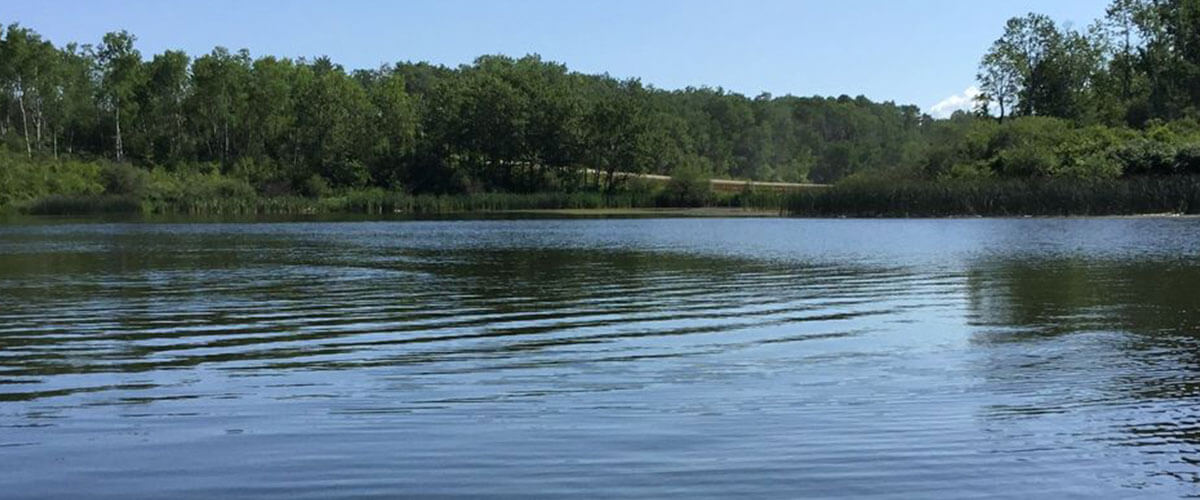
Clean Water Pro conducts fish habitat assessments to determine what species of fish can best thrive based on their structure and food source.
This includes bathymetric mapping, aquatic identification, riparian, invertebrates, and water chemistry. Each species of fish has specific requirements not only to survive but also grow and reproduce.
Our team of fish experts will assess your current fish habitat situation and provide a list of detailed recommendations. Having suitable types and amounts of habitat is one of the most crucial components of establishing a great fishery.
Water Quality Testing and Monitoring

To truly understand a pond or lake, it is essential to conduct comprehensive water analyses to determine the condition of the water body accurately. Our water experts will collect and analyze samples from several sites in and around the water body to reveal the mysteries within the pond or lake. Regular water quality testing is a critical part of our maintenance programs. One-time testing doesn’t provide a big picture of what is happening in the pond or lake. Looking at the changes that occur over a long period provides us with more in-depth knowledge of water bodies, as every pond or lake is unique.
Our Water Quality Testing & Monitoring Includes Water Chemistry Profile, Algae Identification, Swimmers Itch, and more!
Invasive Species Assessment
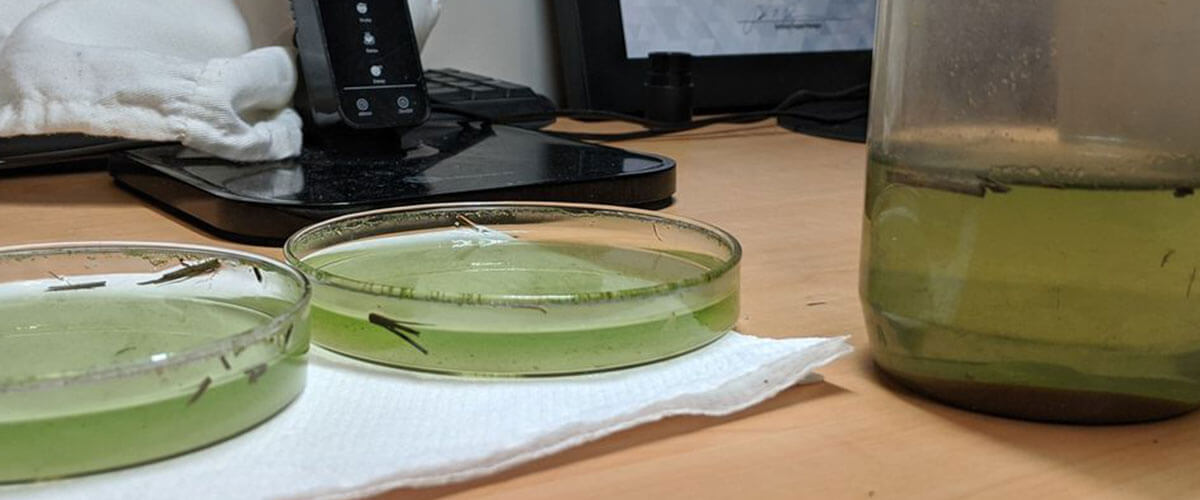
Invasive species are always a concern as they can greatly impact the native species’ ecosystem. Care must be taken to reduce the spread and introduction of invasive species. The best way to do this is with early intervention and identification. Our water experts test for invasive fish, invasive terrestrial weeds, invasive aquatic species, and invasive aquatic weeds.
Baseline Assessment
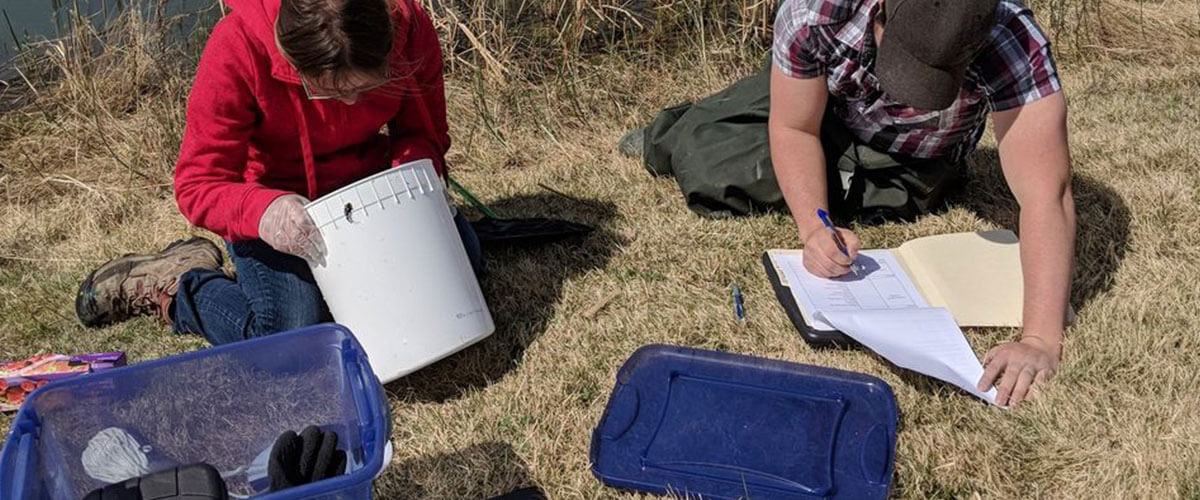
Many tend to try several treatment options with little to no success, so it is important to understand what is happening in the water. The water is tested at a given point in time to provide us with immediate feedback about the current water composition and determine the root cause of any issues in the pond or lake.
Baseline water assessments include a water chemistry profile, algae identification, swimmer’s itch contamination, and more!
Benthic Invertebrate Assessment
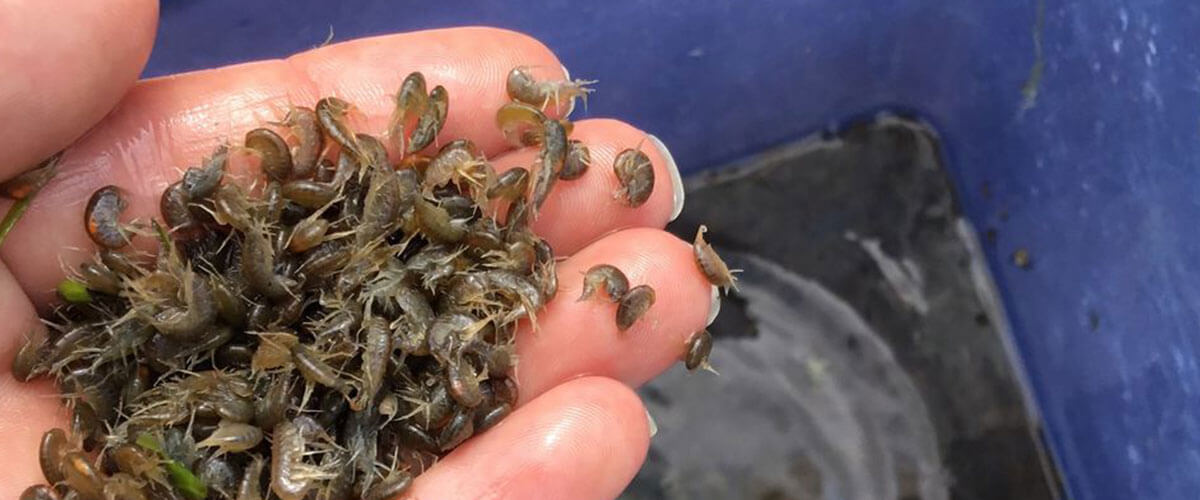
Our team will analyse the invertebrate organisms that live in the lake, pond, or river sediments. This assessment is an effective tool for monitoring and assessing human impacts on the aquatic environment.
We assess benthic invertebrates because they are diverse, generally sedentary, responsive to environmental alterations, reveal information about the diversity of macroinverebrates, and are good indicators of water quality and health.
This includes:
- Sampling and analysis of macrobenthos in lakes, ponds, rivers, and streams
- Research studies and lab analyses
- Environmental monitoring and consulting on water quality issues
Lake Vegetation and Algae Assessment
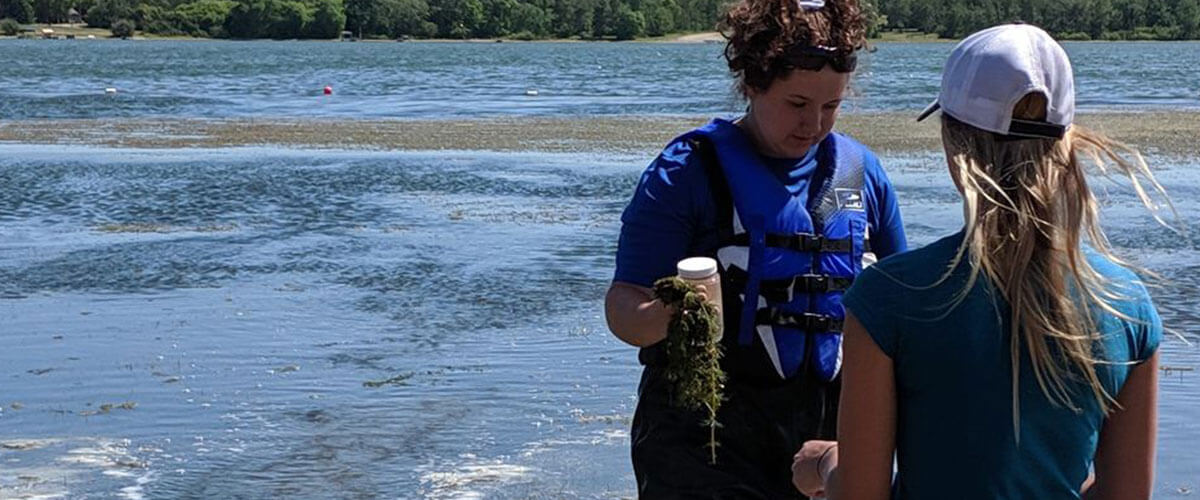
For many ponds and lake users, unhealthy levels of aquatic vegetation can be undesirable as they pose a risk to swimmers and clog filters and boat motors. Although healthy water bodies require aquatic vegetation, balance promotes a healthy aquatic ecosystem.
An assessment provides you with a profile of the species and abundance, providing valuable information to construct a remediation plan. These water assessments include identifying algae. Not only are algae blooms aesthetically unappealing, but certain forms of algae may also be toxic. In many cases, algae can be controlled without dramatic intervention. The initial step is to correctly identify the problem by assessing the current state of your lake or pond.
Dissolved Oxygen Monitoring
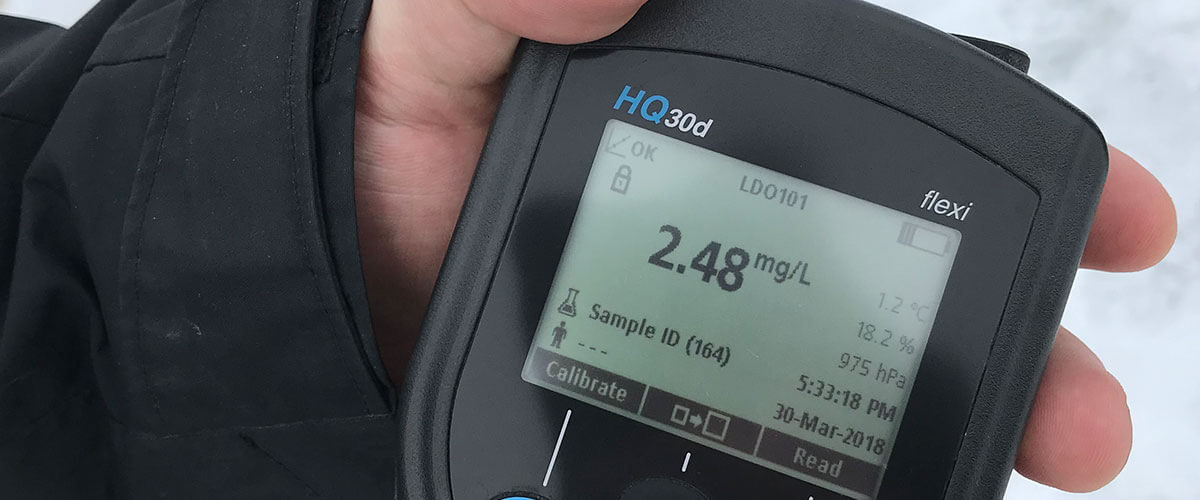
Clean Water Pro tests for the amount of dissolved oxygen present in your water body. Low dissolved oxygen levels are a primary indicator that water quality issues may be coming (or have already begun).
Pond and Lake Consultation

Set up a pond and lake consultation with Clean Water Pro and you’ll receive a visit from our water experts. These consultations go beyond the details that can be communicated through a phone call or email. Our water experts will further discuss your needs from previous conversations and provide recommendations. Our recommendations may vary depending on the your desired outcome, budget, and timeline. We’re happy to provide flexible and customized water treatment recommendations that will suit any background or budget.
New Dugout/Swimming Pond Consultation
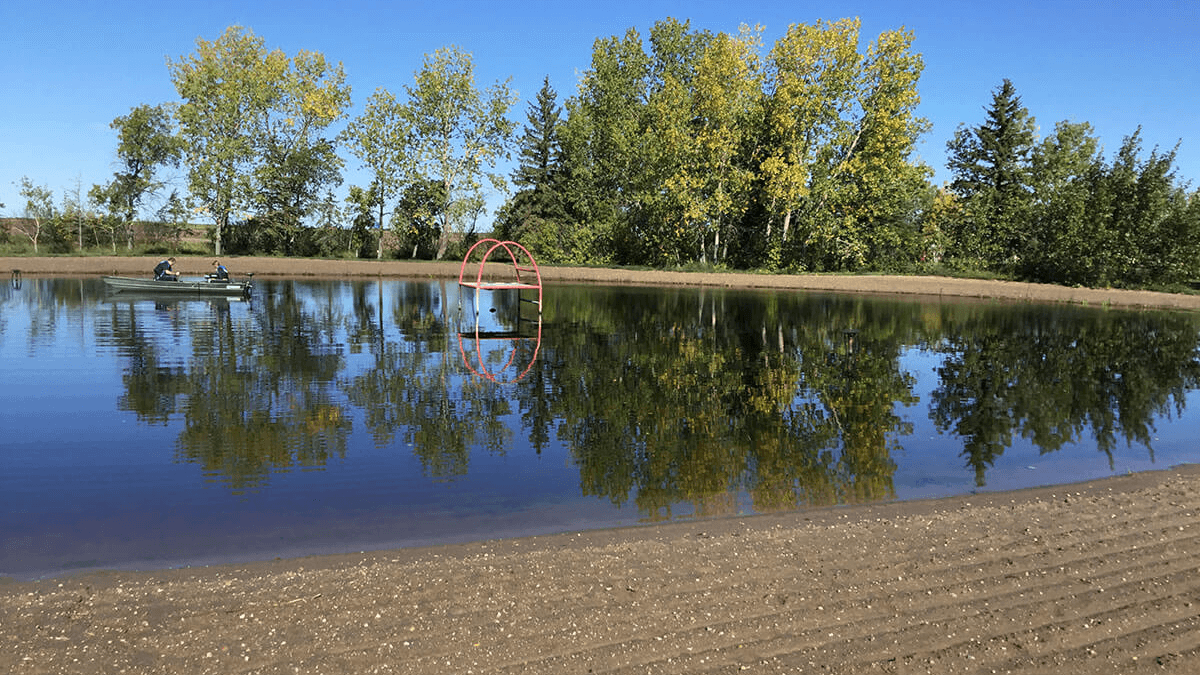
Is your community looking to add a swim pond rather than a pool? Many communities are reaping the benefits of a natural swim pond and campground drawing in visitors from near and far. Natural swimming ponds are an excellent way to elevate a landscape design visually, offer an area for recreational activities, and improve the natural ecosystem. We provide consultations to help properly design them and set them up for success. We’ve worked on a variety of projects with varying budgets and expectations. We can help you discover what options you have!
Wildlife Impact Assessment

A Wildlife impact assessment analyzes the potential effects of a proposed project, development, or activity on wildlife and their habitats. Wildlife impact assessment aims to identify and evaluate a project’s potential impacts on wildlife and develop strategies to mitigate or avoid those impacts. It is often required by law for projects that have the potential to impact wildlife, and our trained wildlife biologist professionals will carry out the projects.
Our process of wildlife impact assessment typically involves several steps, including:
1. Identification of potentially affected species and habitats: This involves reviewing existing data and conducting field surveys to identify the wildlife species and habitats that may be affected by the proposed project.
2. Assessment of potential impacts: This involves analyzing the project’s potential impacts on wildlife and their habitats, including direct consequences such as habitat destruction or disturbance and indirect effects such as changes to food sources or water quality.
3. Mitigation planning: This involves developing strategies to avoid or minimize the project’s potential impacts on wildlife and their habitats. Mitigation planning may include measures such as habitat restoration, relocation of wildlife, or changes to project design or location.
4. Monitoring and evaluation: This involves monitoring the project over time to assess the effectiveness of the mitigation measures and to identify any unforeseen impacts on wildlife.
Bird Nest Sweeps

A bird nest survey searches and collects data on bird nests in a specific area or habitat. Our trained staff typically conducts the survey. It is important to note that birds can be found in all types of habitats, including grassy meadows, and due diligence should be taken.
Bird nest surveys are often conducted before construction to identify and protect bird nests that may be present in the area to avoid fines and protect against the decline in bird populations. It’s a crucial step because many bird species are protected under local, provincial and federal laws and regulations. Our staff are very familiar with regulations to ensure your project complies.
If bird nests are found during a survey, the construction project may need to be modified or delayed to avoid disturbing the nesting birds. This may involve adjusting the location or timing of the construction or implementing measures to minimize disturbance to the birds and their nests, such as limiting noise or traffic in the area by laying out a buffer zone. We will determine the size of the zone, which is determined by the species of bird and the type of construction to take place.
By understanding the distribution and abundance of bird species in an area, developers and planners can make informed decisions about managing and protecting natural resources while allowing for development and human activities. In addition, bird nest surveys can help identify important bird habitats and breeding areas, informing conservation efforts and land-use planning. Call us today!
Reptile Salvage
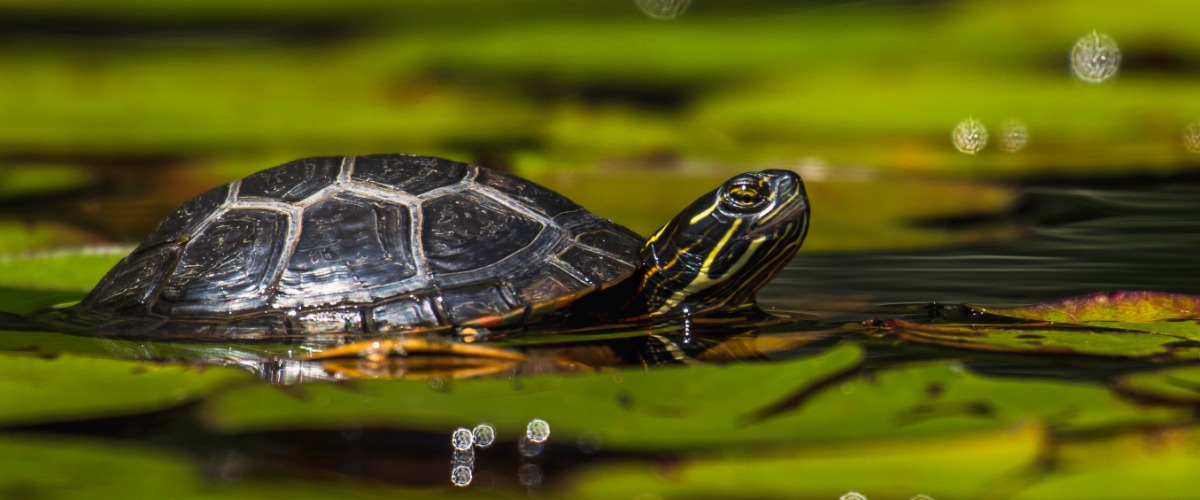
Reptiles, including snakes, lizards, turtles, and crocodiles, are often threatened by habitat fragmentation, degradation, and loss, leading to declines in their populations. Reptile salvage refers to the efforts to rescue and relocate reptiles that are at risk of being harmed or killed due to human activities such as construction, habitat destruction, or pollution. Clean Water Pro wildlife professionals will professionally and safely relocate the reptiles.
Reptile salvage involves capturing and relocating individual animals or entire populations to safer locations, such as nearby protected habitats or areas with suitable habitats. This can help to reduce mortality rates and preserve genetic diversity, which is important for maintaining healthy populations and ecosystems.
In addition to rescue and relocation efforts, reptile salvage may also involve monitoring and assessing the health and status of populations and implementing measures to mitigate the effects of human activities on reptile habitats. This may include creating new habitats, restoring degraded habitats, and reducing pollution and other environmental stressors.
Overall, reptile salvage is an important conservation strategy for protecting these vulnerable and ecologically important animals and ensuring their continued survival in the face of human activities and other threats.
Fish Salvage

Fish salvage refers to rescuing fish from an area that is about to be impacted by a disturbance, such as a construction project, dam removal, or other environmental alteration. The goal of fish salvage is to minimize the negative impact of the disruption on the fish population by safely relocating the fish to another suitable location before the disturbance occurs.
Our team of experts uses various techniques to capture the fish from the affected area. These techniques may include electrofishing, netting, or trapping. The caught fish are then transported to a temporary holding facility, where they are evaluated for any injuries or stress and treated if necessary. Finally, our team releases them into a suitable habitat similar to their original habitat.
Fish salvage is an important conservation tool because it helps to protect fish populations from the negative impacts of human activities. By rescuing fish from areas that are about to be disturbed, fish salvage can help to maintain genetic diversity and prevent the loss of important fish species. In many jurisdictions, it is also a legal requirement to conduct fish salvage operations before any major construction or environmental alteration activities that could potentially impact fish populations.
